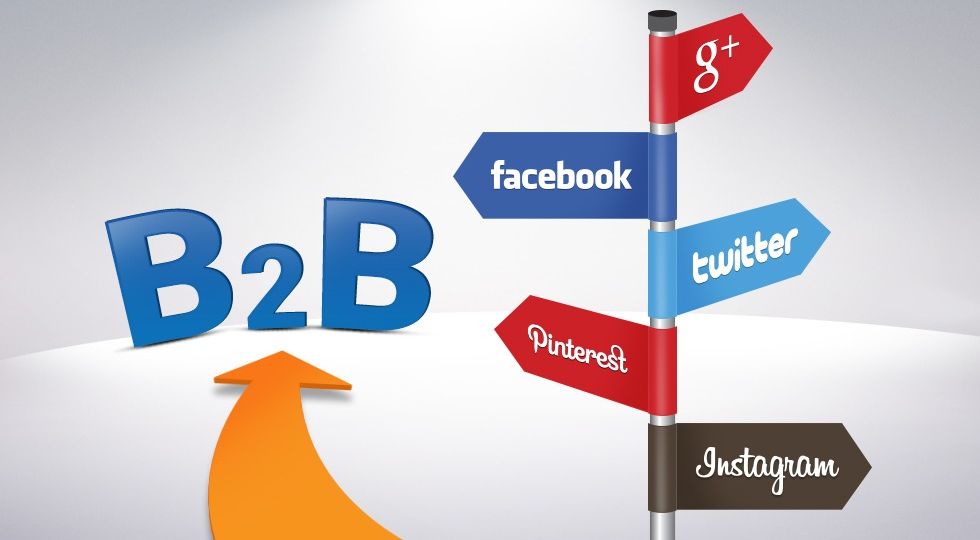
Many a times we contemplate on whether to use social media marketing for a B2B model or not. This particular aspect is changing and studies show that over the next 5 odd years there is going to be a significant increase in how much B2B product and service providers will be spending on social media marketing.
More often than not social media seems to be a money drainer for a B2B business whereas it shouldn’t be so. In order to successfully utilize funds for social media check out these awesome tips put together by Social Media Explorer.
1. Don’t “Sell”, Connect on an Emotional Level
According to a study conducted by CEB in partnership with Google, which surveyed more than 3,000 B2B buyers, B2B brands that connect with buyers on a personal, emotional level are twice as likely to convert, compared to brands that only try to sell “business or functional value.”
The importance of selling emotion instead of features or functional value is Sales 101, and research shows that it isn’t different in the social media landscape. This is the reason why Apple can get away with selling a phone that has similar features to its competitors for thrice what its competitors are charging. Apple users connect with the Apple brand on an emotional level; they aren’t just buying a phone, they are buying the luxury and coolness that comes with using an Apple device. The same goes with Nike customers. They aren’t just buying footwear, they are buying Nike – “the cool footwear.”
You will notice great results if you can leverage this principle with your B2B brand, too. Find out the emotion that is more important to your users, and regularly speak to this emotion on your social media channels.
2. Embrace a Multi-Platform Approach to Social Media
Interestingly, many businesses approach social media as a one-dimensional thing. For example, it isn’t unusual to see a brand focus on Facebook alone and ignore all other channels, or for a brand to work on mastery of Twitter and ignore other social channels. Unfortunately, this approach to social media doesn’t work. The real key to getting results from social media marketing, especially for B2B brands, is to approach social media marketing from a multi-platform angle. Try to be active on as many channels you know your audience is on. Here are some stats that show why:
- 80 percent of all B2B social media sales come from LinkedIn
- Nearly 13 percent of all B2B social media leads come from Twitter
- SlideShare receives 500 percent more traffic from business owners than Facebook, Twitter, LinkedIn and YouTube
- Google+ gets an average of 1.2 billion visits per month, compared to just 809 million visits per month for Facebook
As you can see from the above statistics, every major social network is useful in some way. The key to getting results then isn’t just to focus on one, but to work on achieving mastery of many. *TWEET THIS (would be cool to getthat plugin that allows you to tweet certain highlighted phrases in the post).
3. Target the Right Audience – Social Medial Isn’t a “Free-For-All” Event
Imagine a scenario where a group of cooks are gathered, discussing the latest recipe and special ingredients, only for a stranger to come in and start discussing automobiles. We’re pretty sure that wouldn’t end well. The same goes for social media – it is against social media etiquette to disturb people with irrelevant updates. Targeting the wrong users will not only make your efforts ineffective, it can also tarnish your brand.
Even if you’re already actively using social media for B2B sales prospecting, there are advanced tools available that can help you to identify the most relevant people to engage with. Socedo, for example, allows you to monitor the use of specified keywords in posts and profile descriptions, feeding suggested leads to a queue for you to evaluate. Approved leads are then targeted for automated engagement.
4. Refine Your Blogging Strategy
When most businesses think “social media,” they think Facebook, Twitter, Google+, LinkedIn, etc.. Social media goes way beyond that, and your blog is a huge piece of the puzzle. In fact, research shows that a whopping 81 percent of B2B decision makers use online communities and blogs to help them make purchase decisions. In comparison, just 42 percent use Twitter. Not only do blogs influence consumer decisions, but blogs are a huge piece of the puzzle in the B2B social media landscape.
